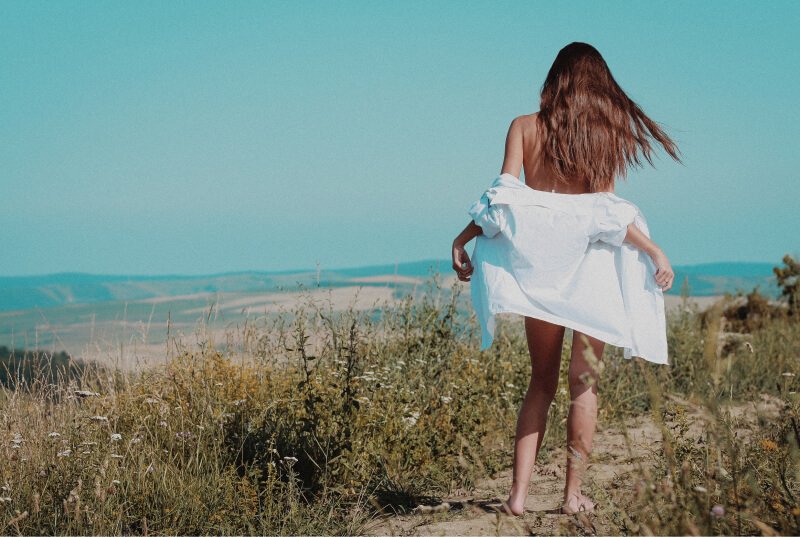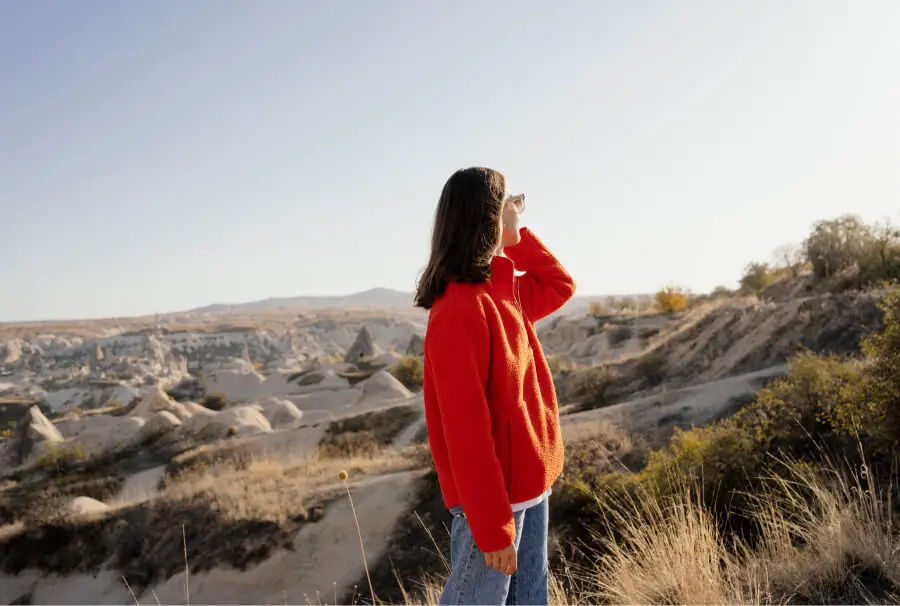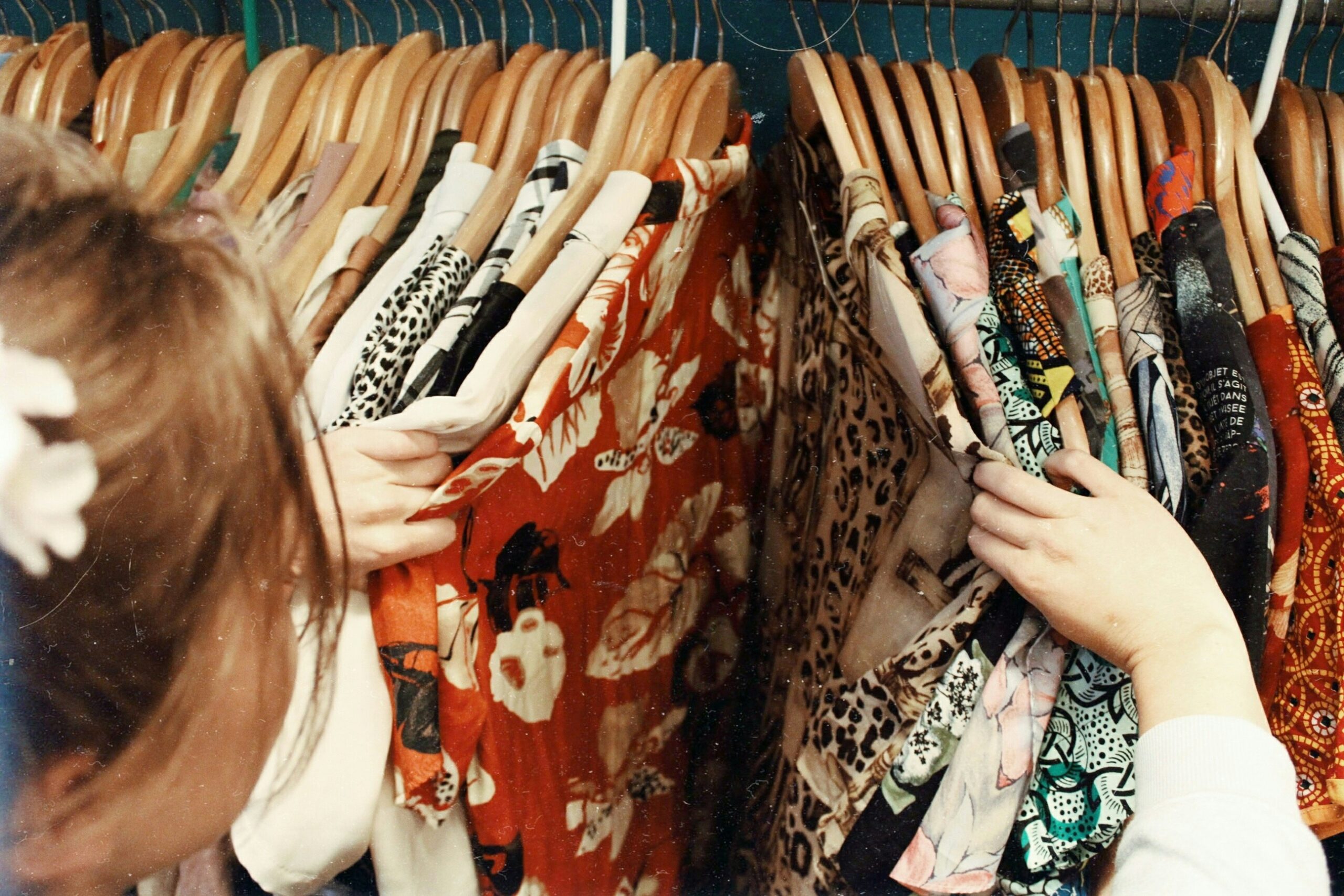When Valentino debuted its pre-fall 2025 collection at the end of last year, the Indigenous community quickly took note.
The collection included a black bag featuring beaded flowers and fringe, details commenters soon identified as closely resembling a 19th-century design by Métis beadworkers. The conversation escalated when actress Lily Gladstone called out the brand directly on Instagram, writing that the decision to recreate such a piece without Indigenous input “baffled” her.
“Métis and Dene beadwork is stunning and deserves to be highlighted in a major way,” she wrote. “But this isn’t how to achieve that. Where other houses have taken meaningful steps forward, this is a major step back.”
It wasn’t an isolated incident. Just weeks after Gladstone’s post, the Indigenous pop-culture news Instagram account Indigenous.tv spotlighted Fear of God’s moccasin line, noting its similarity to contemporary Native styles. The brand’s founder Jerry Lorenzo had recently worked with Alaska Native model Quannah Chasinghorse, a move critics described as confusing visibility with consent. (Fear of God declined to comment.)
These moments reignited a long-running conversation around fashion’s use of Native design language without credit, compensation, or collaboration.
For decades, luxury brands have profited from a romanticised, decontextualised vision of Native aesthetics — often flattening centuries of innovation into vague bohemian motifs. Native designers, meanwhile, face a patchwork of protections ill-equipped to safeguard their intellectual and cultural property.
“Current legal protections for tribal designs remain inadequate,” said Susan Scafidi, fashion law professor at Fordham University. “It’s a patchwork of coverage that leaves many Indigenous creators vulnerable to exploitation.”
Native design isn’t merely visual — it’s spatial, relational and symbolic. Diné weavers encode cosmology into pattern; Haudenosaunee beadworkers map lineage and ceremony into form. When these aesthetics are copied without context, they’re stripped of meaning and collapsed into a generic, pan-Indian look. What’s lost isn’t just credit — it’s cultural memory.
Still, there are signs of positive change happening within the industry: Big-name brands like Ralph Lauren and Arc’tyrex have forged partnerships with Native creators, and Native designers themselves are seeing more attention.
To chart a better course in the future, legacy brands should support Indigenous designers and find ways to collaborate with Native artists, and pay as much attention to process as they do the final result.
“The problem with most brand ‘frameworks’ is they focus on the end product rather than the relationship,” said cultural and ESG Consultant Matthew Yazzie. “They want to know how to ‘use’ Native art correctly without doing the actual work of building genuine connections and relationships with Native artists and their communities.”
A Demand for Accountability
Increasingly, Indigenous designers are asserting their agency — and consumers are responding, drawn to the storytelling inherent to Native aesthetics.
From direct-to-consumer models to limited-edition collaborations and intentional product drops, now Indigenous designers are shaping a dynamic fashion landscape — on their own terms. Notably, a flourishing Indigenous streetwear movement, including brands like Urban Native Era, 4Kinship and Here’s To You, is capturing international attention, generating not only cultural capital but critical economic opportunities for artists, designers and entrepreneurs. There’s also a new class of rising Native-owned fashion brands, including B. YellowTail, Navajo Spirit and Orlando Dugi, which have experienced recent sales spikes; Dugi is turning his focus from custom couture to ready-to-wear to meet demand. This fall, too, marks an upcoming milestone: Indigenous Fashion Week New York will debut in September.
Contemporary Native designers are leveraging digital platforms to bypass traditional gatekeepers. Kwakwaka’wakw moccasin designer Jamie Gentry, for instance, uses Instagram to reach a broad customer base through direct-to-consumer sales, circumventing the geographic and institutional barriers that have historically marginalised Native artists.
“It’s given artists a wider audience than they could reach from just a brick-and-mortar store in small communities where they don’t have that opportunity to share their work broadly,” said Gentry.
Plus, some Native designers are subverting traditional dynamics, putting their own spin on mainstream designs. Jamie Okuma (Luiseño and Shoshone-Bannock), known for her intricate beadwork, famously hand-beaded a pair of Christian Louboutin heels — a volte-face from the familiar pattern of luxury brands borrowing from Indigenous cultures without acknowledgment.
Celebrity visibility has further bolstered this momentum. “Real Housewives of Beverly Hills” star Jennifer Tilly, along with actors Wes Studi publicly supported Native-made designs at the 2024 Santa Fe Indian Market — an influential and high-end market among the many vibrant bazaars across Indian Country. Meanwhile, mainstream publications have been taking notice, too: New York magazine’s Winter 2024 issue featured Jessica Metcalfe’s Beyond Buckskin adornments in a holiday gift guide, while Vogue writer Christian Allaire wrote a piece last month about wearing Indigenous designers on his book tour.
Still, significant barriers persist. Native brands remain underrepresented across major retailers, and viral social media moments rarely translate into long-term change. In the absence of sustained, industry-wide commitment to platforming Indigenous creators have expanded awareness of cultural appropriation, but its deeper systemic roots — and the artists from hundreds of tribes affected — remain largely overlooked.
From Tokenism to Provenance
While the industry still sees instances of appropriation, more legacy brands are taking steps to chart a new course, spotlighting Native designers and educating consumers on ethical collaboration.
Amazon’s Buy with Prime blog, for instance, has published guides to help shoppers identify authentic Native American fashion, while Neiman Marcus and Nordstrom have begun providing more detailed provenance information for Indigenous designed pieces.
Outdoor companies, in particular, have emerged as natural allies. Already positioned at the intersection of humans and the environment, these brands deepen that connection by amplifying Indigenous designers and environmental stewards.
Last July, REI piloted a partnership with Urban Native Era, initially placing products — including sweats, T-shirts and hats featuring the message “You’re On Native Land” — in just eight stores. The launch weekend exceeded sales expectations, prompting REI to rapidly expand UNE inventory to all 181 locations nationwide by the following month.
“Wanting something with such a strong statement shows they want to put Indigenous visibility on their shelves,” said UNE founder Joey Montoya.

That same month, Vancouver-based outdoor brand Arc’teryx, headquartered on Musqueam territory, launched “Walk Gently”, a platform to support Indigenous presence in the outdoor industry. It included a collection of T-shirts and shorts designed in collaboration with Cole Sparrow-Crawford, a Musqueam creative director.
“As a company in Canada, if you want to honour Truth and Reconciliation, represent that,” said Sparrow-Crawford. “We aren’t asking people occupying our territory to leave but to walk gently.”
For some brands, the goal is to reconcile a problematic legacy. Ralph Lauren, long criticised for appropriating Native aesthetics, took a new approach in 2022, launching its Artist-in-Residence program. The inaugural designer was Gen-Z Diné weaver and skateboarder Naiomi Glasses, who received both financial and creative freedom to design a collection aligned with traditional Diné wearing practices. The program also featured a Native-led ad campaign.
“Because it was a pilot program, they told me we’d both be learning together,” said Glasses. Her ability to dictate material and design specifications faithful to intergenerational techniques shaped a collection that, in her words, “looked like a naturally hand-woven piece — not like a design thrown on a sweater.”
The Artist-in-Residence initiative will continue this year with queer Diné weave Zefren-M, further expanding the program’s commitment to community-led storytelling.
According to Sasha Kelly, Ralph Lauren’s head of design with intent, the brand is learning to work at a different pace. She advocates for a slower process, one outside the traditional fashion calendar, focused on “learning to unlearn, platforming the creator, manufacturing with the community, and providing a design fee and royalties returned to benefit the community at large.”
Such practices not only mitigate the risk of cultural appropriation— they often result in more authentic, resonant and innovative designs.








